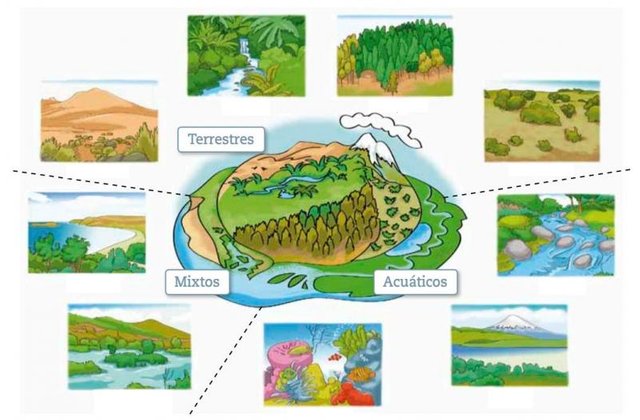What is an ecosystem

Source
An ecosystem is a place where life develops; this is the sine qua non condition.
Wherever a living being is, it is an ecosystem. So far, only on our planet, Mother Earth, there are living beings, therefore, only on our planet, there are ecosystems. The astronaut missions, when taking living beings to the zone after the atmosphere or to the Moon, established transitory ecosystems, outside our planet, which disappeared when they withdrew and returned to the planet.
An ecosystem is the basic unit of the development of life, that is, of living beings. With our senses, we can perceive ecosystems: a place, with physical and chemical conditions, with living beings of any, some or all kingdoms. Our senses, our knowledge, make us perceive living beings, through these, we say it is an ecosystem.
But through technology, through technique, we discover that there are microscopic beings, an endless number of microecosystems. It is incredible how a living being itself offers places in its anatomy for the development of the life of macroscopic or microscopic living beings, with symbiotic, parasitic or other relationships. When detecting a living being living on or within another, that is an ecosystem is a microecosystem.
Let's see a plant, insects, arachnids, birds, reptiles, mammals, fungi, epiphytes, bacteria, viruses, algae, a variety of living beings, permanently or periodically. A plant living being is the seat, the place where some living beings develop their life, around or inside their roots, trunk, leaves, flowers or fruits.
We ourselves, as humans, carry bacteria, viruses and parasites in our organism. Our skin, systems and apparatuses harbor these living beings in harmonious relationship with our body. The notion of infection is the development of an "unauthorized" ecosystem, with predominance of a microscopic being(s) over the others. It is also posed as the presence or growth of microscopic beings in places that are not dedicated to their permanence of these microscopic beings. This is an ecosystem.
Since Verdnasky's contributions, each and every ecosystem on our planet has been called a biosphere. That sum total is an ecosystem, the terrestrial mother ecosystem.
This concept of biosphere is easier to define than ecosystem. To define an ecosystem within a group, the delimitation of each ecosystem, we have not yet been able to, because they do not have a "membrane" or "limit" defining their territory. If they are equal ecosystems with the same soils, vegetation and climate, they are not distinguishable from each other and together, they form a biome.
However, when we move from one ecosystem to another, there are intermediate zones called ecotones. These are zones that resemble the two ecosystems, they stop resembling the first one and each time resemble the second one. The ecosystems of the mangrove biome are ecotones between the ecosystems of the emerged territories and the intra-aquatic ecosystems.
It is an ecosystem, a place where life develops. To talk about life is to talk about ecosystems.
Hello @eliorrios, What a great explanation about the ecosystem and types of ecosystems, you have left us.
I remember more than 10 years ago I was an ecology teacher in the university where I currently work, and take a bad impression to see that young students who were echarged from an ecosystem, something that I consider really important at all levels.
See you
Hello friend, excellent content, ecosystems are automatically related to the presence of organisms between which there may be a synergy, an example of this are the agricultural ecosystems that are transformed by man, but there interact the soil biota for decomposition of organic matter in order to supply another organism such as plants nutritional elements of plants, nature is complex but perfect and beautiful.
See you later, have a great week.